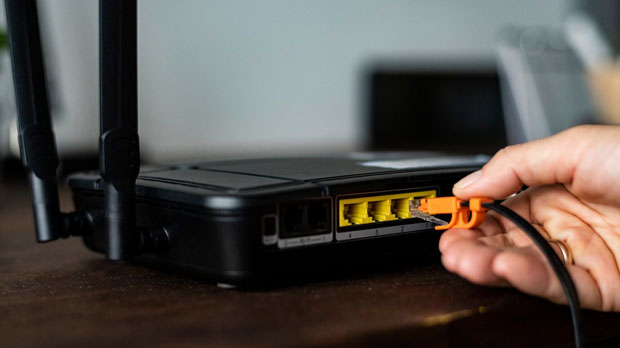In today’s digital marketing world, click fraud has become a serious concern, affecting advertisers' budgets and undermining trust in online advertising platforms. One of the most effective methods for verifying ad clicks is leveraging IP lookup technology. By combining IP tracking with data analysis, businesses can accurately identify whether clicks on their ads are legitimate or fraudulent. This technology helps to track the origin of a click, providing key insights into user behavior, geographical locations, and the potential for fraudulent activities. In this article, we will explore how IP lookup technology can be integrated into ad click verification processes, the benefits it offers, and the best practices for utilizing this technology to ensure the authenticity of ad interactions. Understanding IP Lookup TechnologyIP lookup technology works by identifying the geographical location, organization, and other details of a user based on their IP address. This process is crucial for advertisers who wish to track where their clicks are coming from, helping them identify legitimate users and fraudulent activity. IP addresses serve as unique identifiers, allowing the tracking of digital interactions across various platforms, including websites and ad networks. By using IP lookup services, advertisers can gain insights into the behavior of users interacting with their ads. This data can then be analyzed to determine whether clicks are originating from legitimate users or bots designed to mimic human behavior. For example, if the IP address of a click comes from an unusual location, such as a known VPN server or an IP range previously flagged for suspicious activity, it may raise a red flag.The Role of IP Lookup in Ad Click Fraud PreventionAd click fraud is a type of online fraud where fraudulent clicks are made on an advertisement with the intent of generating revenue for the fraudster or draining an advertiser's budget. This often happens through automated bots that mimic human behavior, clicking on ads repeatedly without any real intent to engage with the product or service. IP lookup plays a crucial role in identifying such fraudulent activity.When an ad is clicked, the advertiser can perform an IP lookup to check the location of the IP address. If multiple clicks originate from the same IP address in a short period, this could indicate that the clicks are not from legitimate users. Additionally, if the IP address is from a region that doesn't match the target audience of the ad, this can be a sign of click fraud. IP lookup technology also allows for the detection of bot traffic. Bots typically operate from specific IP addresses, often located in data centers or using proxy servers. Advertisers can compare incoming click data with known databases of IP addresses associated with bots or fraudulent activities. This helps in filtering out invalid clicks and protecting marketing budgets from fraudulent activities.Benefits of Using IP Lookup for Click Verification1. Enhanced Accuracy in Click Tracking By leveraging IP lookup, advertisers can verify the authenticity of each click. With more precise tracking, it becomes easier to determine if the click is coming from a legitimate user, a suspicious location, or a bot.2. Geographical Insights for Targeting IP lookup offers valuable geographical data that can be used to refine ad targeting. If clicks are coming from regions where the product or service is not available or where the target demographic does not reside, the advertiser can adjust the campaign to optimize ad spend.3. Reduction of Click Fraud By identifying and filtering out invalid clicks, advertisers can save money and prevent fraudulent actors from draining their budgets. This technology serves as a preventative measure against fraudulent practices, ensuring that advertisers only pay for genuine clicks.4. Improved Reporting and Analytics With IP lookup technology, advertisers gain access to more detailed data about their audience. This allows them to better analyze performance, refine their ad strategies, and create more effective campaigns.Best Practices for Implementing IP Lookup in Ad Click VerificationTo make the most out of IP lookup technology, advertisers should follow certain best practices:1. Use Reliable IP Lookup Services It is essential to use a reputable and accurate IP lookup service. These services should offer comprehensive databases of IP addresses, including information about geolocation, VPN usage, and known fraud patterns. Make sure that the service integrates well with your advertising platform.2. Monitor IP Patterns Regularly Regularly monitor IP address patterns to identify potential signs of click fraud. Establishing a baseline of normal click behavior will help in quickly spotting unusual patterns, such as multiple clicks from the same IP within a short time frame.3. Combine IP Lookup with Other Fraud Detection Techniques While IP lookup is effective, it is best to combine it with other fraud detection techniques, such as user behavior analysis, device fingerprinting, and machine learning models. This multi-layered approach increases the chances of detecting fraudulent activity early and improving the accuracy of click verification.4. Set Click Frequency Limits Advertisers can implement rules to limit the number of clicks allowed from a single IP address within a certain timeframe. If the number of clicks from a particular IP exceeds the limit, it should be flagged for further review.5. Utilize Dynamic IP Analysis Dynamic IP analysis refers to examining changes in the IP address over time, such as users switching IPs between clicks. This can help identify suspicious behaviors and distinguish legitimate users from bots.Challenges and Limitations of IP Lookup for Click VerificationAlthough IP lookup technology is highly effective, there are some challenges and limitations to consider. For example:1. Dynamic IP Addresses Some internet service providers assign dynamic IP addresses to users, which means a legitimate user’s IP address can change frequently. This can create difficulties in tracking individual clicks over time and accurately verifying the origin of a click.2. VPN and Proxy Usage Users can hide their true location by using VPNs or proxies, making it difficult for IP lookup to determine the authenticity of a click. Advertisers need to be aware that while IP lookup is useful, it is not foolproof.3. Geo-targeting Accuracy Although IP lookup can provide geographical insights, it is not always 100% accurate. Sometimes, the geolocation data may not perfectly match the user’s actual location, especially if the user is accessing the internet via a mobile network or VPN.4. Bot Mitigation While IP lookup helps identify known bot traffic, new or sophisticated bots may still bypass detection. Combining IP lookup with machine learning and behavioral analysis can help mitigate this issue.ConclusionIn conclusion, combining IP lookup technology for ad click verification is an essential tool for preventing click fraud and ensuring that advertising budgets are spent effectively. By providing detailed information about the origin of clicks, IP lookup helps advertisers identify fraudulent activity, improve click verification accuracy, and refine ad targeting. While there are challenges to consider, such as dynamic IP addresses and VPN usage, the benefits far outweigh the limitations when combined with other fraud detection methods. Advertisers should implement best practices for utilizing IP lookup and remain vigilant in monitoring click patterns to safeguard their marketing investments and ensure the integrity of their online advertising campaigns.
Jul 16, 2025



































































